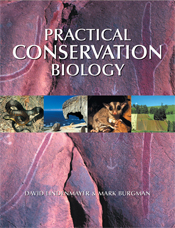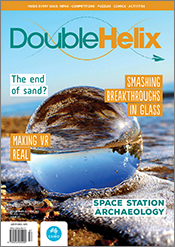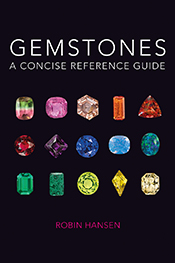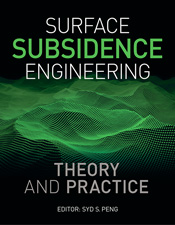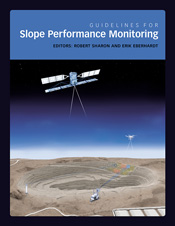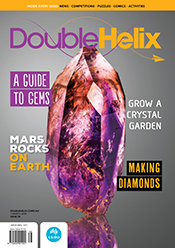Practical Conservation Biology
By: David D Lindenmayer, Mark M Burgman
Reflects the latest thinking on topics central to conservation biology and natural resource management.
Practical Conservation Biology covers the complete array of topics that are central to conservation biology and natural resource management, thus providing the essential framework for under-graduate and post-graduate courses in these subject areas. Written by two of the world’s leading environment experts, it is a ‘must have’ reference for environment professionals in government, non-government and industry sectors. + Full description
The book reflects the latest thinking on key topics such as extinction risks, losses of genetic variability, threatening processes, fire effects, landscape fragmentation, habitat loss and vegetation clearing, reserve design, sustainable harvesting of natural populations, population viability analysis, risk assessment, conservation biology policy, human population growth and its impacts on biodiversity.
Practical Conservation Biology deals primarily with the Australian context but also includes many overseas case studies. The book is the most comprehensive assessment of conservation topics in Australia and one of the most comprehensive worldwide.
Winner of the 2006 Whitley Award for Best Conservation Text.
- Short descriptionNews
No longer available in a print edition.
Reviews
"Mention the subject 'conservation biology' and the names of two of the best practitioners - David Lindenmayer and Mark Burgman - spring to mind. This book has been structured in such a way that it can be read either from start to finish, or by dipping into selected sections of interest. Lindenmayer and Burgman have produced an exemplary text for both students and practitioners in the local context."
Fiona Hogan, The Victorian Naturalist, February 2008
"Although Practical Conservation Biology is written with the advanced undergraduate reader in mind, it would also prove a valuable reference for the postgraduate student or researcher setting foot on unfamiliar soil. One would certainly expect to see it on university booklists Australia wide, and remain so for many years to come."
S. Stankowski, Pacific Conservation Biology, Vol 12, No 4, December 2006
"It provides a comprehensive overview and attempts to cut through the mass of ecological detail and distil out the most important ideas and applications for current conservation management issues in Australia. This book is a significant improvement on the previous edition and it is hoped that future editions will be created based on continuing developments in conservation biology science."
Bruce A. Wilson, Ecological Management & Restoration, Vol 7, No 2, August 2006
Details
ePDF | October 2005ISBN: 9780643093102
Publisher: CSIRO Publishing
Available from eRetailers
Features
- provides practical approaches to tackle real-world conservation biology problems
- includes 150 case studies from Australia and worldwide
- topics covered include fire and the Australian biota, demands of human population, and protected areas and managed populations
- 170 photographs and 180 figures
Contents
Part I. Principles for conservationWhy conserve?
What should be conserved?
Conservation status: classification of threat
Protected areas,off-reserve conservation and managed populations
Part II. Impacts
Changes in the physical environment
Loss of genetic diversity, populations and species
Changes in species distributions and abundances
Harvesting natural populations
Vegetation loss and deterioration
Landscape and habitat fragmentation
Fire and biodiversity
Demands of the human population
Part III. Methods of analysis
Measuring, managing & using genetic variation
Measuring diversity
Identifying habitat
Reserve design
Monitoring, assessment and indicators
Risk assessment
Part IV. Management principles for conservation
Sustainability and management
Appendix I. Taxonomic names
Appendix II. Glossary
Bibliography
Index
View detailed Table of Contents.
Authors
David Lindenmayer is an ecologist and conservation biologist with over 20 years experience in working in Australian forests, woodlands and studying native vertebrates. He was awarded the Eureka Prize for Environmental Research and the Australian Natural History Medal. He has published more than 380 scientific articles and 14 books on a wide range of topics associated with environmental science and conservation biology.Mark Burgman is Professor in Environmental Science at the School of Botany, University of Melbourne. He is an ecologist known for his work on ecological modelling, monitoring programs, conservation biology, and risk assessment. He has worked on a broad range of species and ecological systems in a range of settings including marine fisheries, forestry, electrical power utilities, mining, and waste treatment and worked as a consultant ecologist and research scientist in Australia, the United States and Switzerland before joining the University of Melbourne. He acts on scientific advisory panels for several environmental institutions and has published seven books and over 150 research papers, reviewed reports and commentaries.

